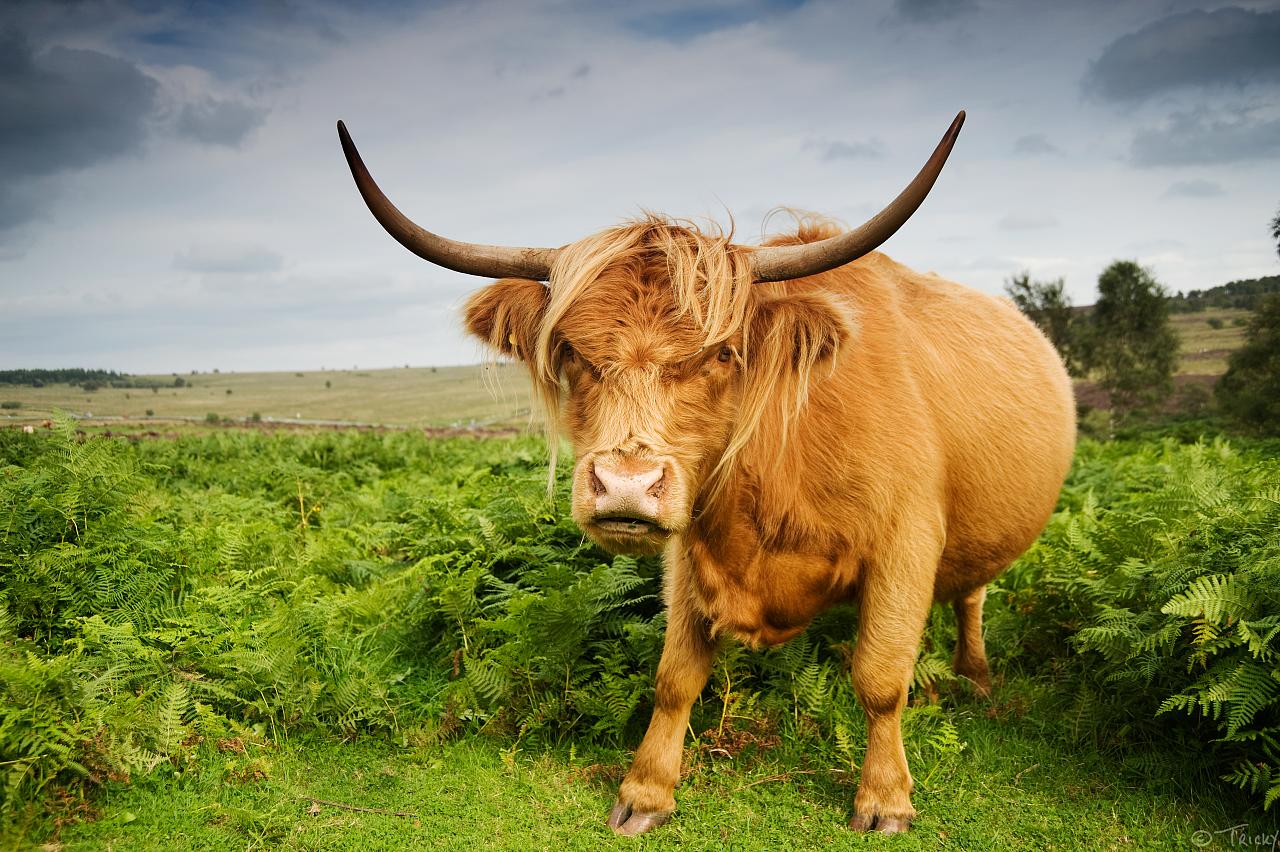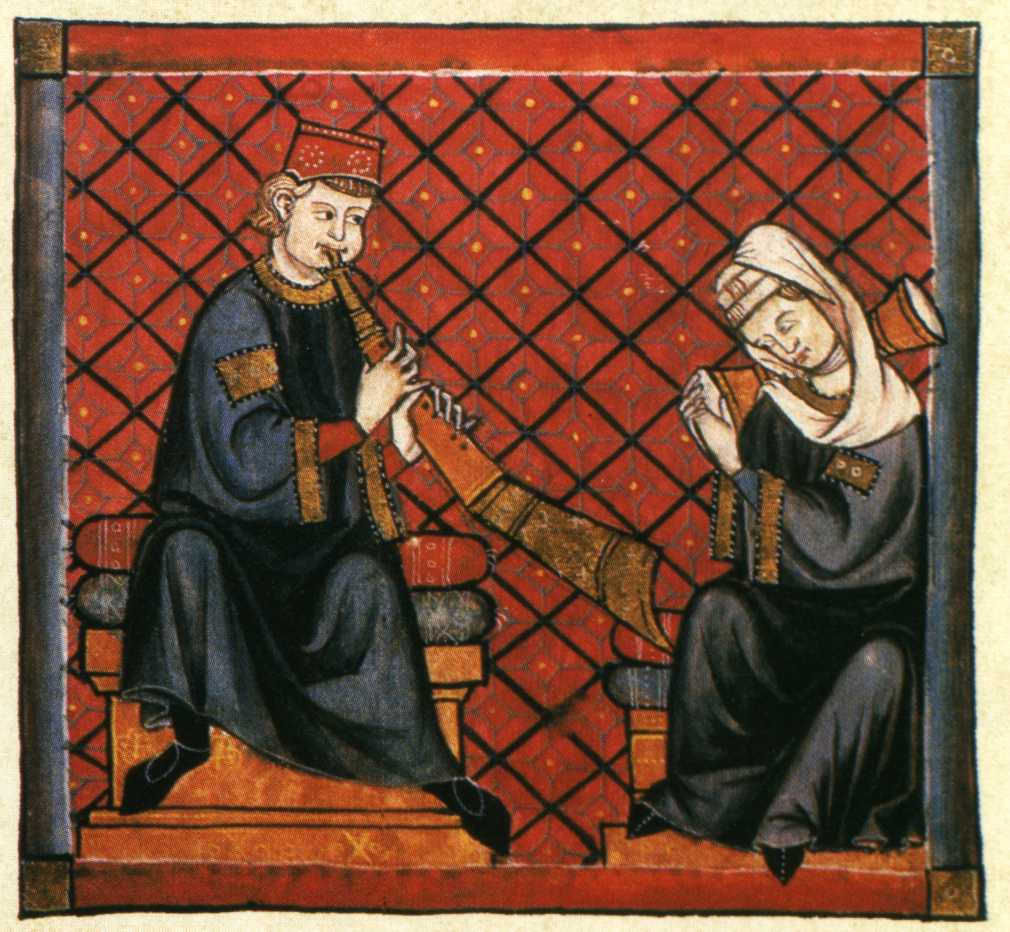 |
| http://www.photoree.com/photos/permalink/1557190-81851211@N00 |
Animal Horns
The horns of cattle, sheep, goats, or antelope were probably the first lip reed instruments. The blowing horn or winding horn is a sound device by and large shaped like a horn or actually a cattle or other animal horn arranged to blow from a hole in the pointed end of it.
http://en.wikipedia.org/wiki/Blowing_horn
Animal horn instruments were very important tools used on the summer pastures. They were blown to scare off predators, and also to enable long distance communication across the valley. Traditional horn signals were known by most people and the horn players could pass messages about lost cattle, predators, or just to say hello to their neighbors.
Blowing Horns
Horn Use In the Middle Ages
The blowing horns of the Middle Ages took many different forms, from the small horn carried on a strap over the shoulder to the military horn as tall as a man.
The most commonly used horns in the Middle Ages were:
The medium-sized cow-horn: because of its tremendous volume the cow-horn, which was actually made from a buffalo horn, was used for hunting.
The military horn: curved and made of metal this horn was nearly as high as a man. It had a louder and more booming note than any other horn and was therefore used for military purposes. Its successor is the Alpine horn.
The bugle: this was the smallest of all horns and was made either of animal horn or metal and was used by guards, sentries and shepherds. In courtly circles the more elegant version made of gold or ivory was used.
Instead of a mouthpiece, these instruments had an opening to blow into. Originally only a single note could be produced on the small horns and the first three naturals on the bigger ones. From about 1000 AD finger-holes, which first appeared in England, gradually increased the range of notes, following the example of pipes.
The first coiled horns, the direct forerunners of modern valve horns, were made in Europe, probably around the 12th century. Although coiled horns had already existed in early civilizations the knowledge of how to make them had been lost in Europe during the migration of peoples around 800 AD.
To judge from the archaeological materials we have, such as old cores, illustrative evidence, and a very limited number of physical remains, it is clear that horn was used in the Middle Ages for more than making sounds through blast (or "blowing", "winding" or Hunting) horns or used for the stereotypical drinking horns. Since horn can be softened, made malleable, and be molded it was used for many purposes such as the manufacturing of spoons, scoops, combs, and filler on helmets, boxes and caskets. It was also used to make lantern panes, window panes, cups, knife handles, ink wells, coin holders, containers of all kinds, axle-grease holders, grain holders, Cupping Horns, horn nocks on the ends of bows, and even stripping across the backs of bows. Unfortunately, because of the relatively "soft" nature of horn, archaeological remains do not survive as well as do bone or wood artifacts. Therefore, while horn *might* have been made into buttons, bracelets, shoehorns and so forth, the evidence appears to suggest that the widest potential uses of horn were probably not explored until the 19th century.

SHOFAR
Shofar Instructions
By Sara Janis, eHow Contributor
ARTICLE FROM: http://www.ehow.com/way_5863928_shofar-instructions.html
The shofar is an ancient ritual instrument of the Jews. It is an animal's horn made kosher by emptying the flesh and blood of the horn. The shofar is the forerunner of the bugle. The shofar is sounded to announce holidays, specifically Yom Kippur, the day of repentance, and Rosh Hashanah, the Jewish New Year.
How a Shofar is Made
The shofar is the horn of any kosher animal except the cow. The mouthpiece (the small end) is covered with gold or silver. The horn is flattened, then heated and shaped to form a cone. The horn is hollowed out. To consider it kosher it must be a perfect horn, with no cracks and no signs of patching. It is filled with water to ensure its quality. The shofar should be curved, not straight, with the open end facing upward.
How to Blow the Shofar
Just as you would to play a trumpet, you make your lips vibrate. Try practicing "raspberries," as children do. Another way is to make your top lip firm, while allowing your bottom lip to go softer. Then just blow.
The shofar does not have a vibrating reed. You use your lips as the reed. As you discover where your lips vibrate best, the sound will resonate through the shofar. Be prepared to practice. Once you have mastered this, the sound is dramatic and loud.
Stand as you play the shofar. The one playing the shofar on high holy days stands on the bema, at the front of the synagogue where the Torah, the holy five books of Moses, is kept.
Read more: Shofar Instructions | eHow.com http://www.ehow.com/way_5863928_shofar-instructions.html#ixzz2NqSUVOzb
Marc Chagall "Shofar"
Instruments made of bone, wood, and animal horn were used by our earliest ancestors and have continued to have uses until our own times. From the beginning the blowing horn was more a practical tool than a musical instrument. It was used for scaring wild animals that threatened a shepherd`s flock or used as a means of giving warnings and signals. Later, finger holes were added to the instruments, at first 2-3 and then up to 8. With this innovation it became possible to play simple melodies. Today, the instrument is usually called ram`s horn because the male goat has been the main provider of raw materials.
http://evolutionofmusic.wikispaces.com/Stone+age+music
RAM'S HORN
All Rams Horns for blowing are not Shofars as used in Hebrew Worship. In Norway the ram's horn and wooden horn (Bukkehorn and lur) are traditional instruments associated with mountain farms and shepherds. As big horned animals are rarely found in Scandinavia, blowing horns are often made from wood, wound birch bark or bout, called a "lur." The bukkehorn is an instrument type which is found over large parts of the world. It was traditionally used on high mountain summer dairy farms by herders at least since medieval times. There are two main types of bukkehorn. The more common type has a plain hole for a mouthpiece and is blown as a brass instrument, with from two to three up to eight finger holes. The other type is called tungehorn ("tongue horn"), and is played like a clarinet; it has a reed made of birch bark or juniper in the mouthpiece. A variation on the ram's horn is known as the tongue horn (tungehorn). It has a reed made of juniper wood that is similar to a clarinet reed, and has from four to eight finger holes. Later horns were made with two, three, and up to eight finger holes. It is also called the trumpet horn (trompethorn).
Later horns were made with two, three, and up to eight finger holes. It is also called the trumpet horn (trompethorn). A variation on the ram's horn is known as the tongue horn (tungehorn). It has a reed made of juniper wood that is similar to a clarinet reed, and has from four to eight finger holes.
http://www.ramshornstudio.com/the_bukkehorn.htm
GEMSHORN
The gemshorn is made from animal horns (originally chamois or goat but later cows or oxen) and is blown like a recorder (flute-like instrument) with six finger holes. The big difference between the two instruments is that the gemshorn tapers off to a tip, which gives it a mellow, watery sound. It is also more limited in its range.
Cantiga de Santa Maria 215 with Gemshorn and Hümmelchen
http://www.youtube.com/watch?feature=player_embedded&v=iHxLD4zsBk4#!

http://www.music.vt.edu/musicdictionary/textg/Gems-horn.html
Conch Horn
A Conch is a musical instrument, a wind instrument that is made from a seashell, the shell of one of several different kinds of very large sea snail. These instruments are sometimes referred to as "shell trumpets."
The shells of large marine gastropods are prepared by cutting a hole in the spire of the shell near the apex, and then blowing into the shell as if it were a trumpet, as in blowing horn. Sometimes a mouthpiece is used, but some shell trumpets are blown without one.
http://en.wikipedia.org/wiki/Conch_(instrument)
A way to clean these is to freeze them overnight and once frozen, place them in a warm bucket of water allowing them to partially thaw. Your can then pull out the meat and leave the shell intact. A bit of soaking and cleaning followed by cutting and working the end hole smooth. Let it dry for a few days in the sunshine.
Overview
History
Ancient:
Medieval:
Modern:
Contemporary:
http://www.hornplanet.com/hornpage/museum/history/horn_history1.html
It took hundreds of years for the natural horn to evolve into the complicated and very important musical instrument that it is today. The horn is an instrument made from brass with a tubing of 12–13 feet (3.66–3.96 meters) that is folded into a coil with a flared bell. Musicians who play the horn are generally called horn players or less commonly, hornists.
The natural horn is the ancestor of this brass instrument which was often referred to as the French horn. In 1971, the International Horn Society recommended using just the name horn; but, today, many people in the United States still prefer to use the name French horn. The horn belongs to the brass family and is the second highest sounding instrument.
Primitive types of horns have been found all over Europe. These instruments, either from animal bones or created with metal, facilitated the creation of sounds by adding mouthpieces. They were used to summon animals, or employed by watchmen to alert to oncoming enemies, or by the military for signaling. Early horns were simple and were played during hunting; the sound given off was called recheat. The most common pitches used were B? alto, A, A?, G, F, E, E?, D, C, and B? basso. In order for the instrument to be played in different keys, they used crooks (parts of tubing with different length were inserted) that changed the length of the instrument and its pitch.
Greeks used a long straight trumpet called a salpinx, the lituus (a small and straight horn with an upturned bell) was used by the Romans and the Scandinavians played on metal horns called lurs (a long natural blowing horn without finger holes that is played by the use of facial muscles and the shaping of the lips to the mouthpiece). Various similar types of horns were also discovered in other ancient civilizations.
The Romans also used the cornu (a large coiled trumpet similar to the later hunting horn); actually this was a collective name of four kinds of horns: the short horns from animals used by shepherds, the longer and semicircular horns used as signals, the longer horn that can be bent and carried called the buccina (a brass instrument used in the ancient Roman army which had the wide bore of the modern tuba) and the small Medieval horn used for hunting.
The most famous medieval brass instrument (although it was often created from ivory but not coming from the elephant’s tusk) was the oliphant. Based on the oral tradition of this period, the oliphants might have been used as signaling devices during hunts or battles but many believed that this large and often ornately decorated horn was a status symbol of the rich and wealthy land owners. These were some of the most commonly used horns in the Middle Ages:
1. The cow horn was medium size and made from buffalo horn. Due to its loud volume, it was a hunter’s horn.
2. The military horn was curved and made from metal. Its height was as tall as man and due to its booming sound, it served the military well. Its successor was the Alpine horn.
3. The bugle was the smallest horn and made from either animal horn or metal. This was used by guards, sentries and shepherds. In the high circle of society, the bugle was made either of gold or ivory to look elegant.
Around 1000 AD, finger holes were added to increase the horns range of notes, like that of the pipes. The Baroque period transformed the horn from a hunting instrument to an orchestral instrument. The cup-shaped mouth pieces of the Baroque horns were either flared up extensions of their tubal mouth or a separate detachable fitment. In this period, the art of cornet playing was popular. The cornet was a soprano instrument with seven curved tubes and seven finger-holes made of wood.
Jean Baptiste Lully of Paris, in 1680, introduced some orchestral technique innovations by expanding the string orchestra to five parts and championed the use of hunting horns by orchestras. In 1700, the hunting horn underwent an important change in design at the hands of the Leichamschneiders, who were brothers from Vienna. The new horn design gave the instrument a different quality of tone. Around 1753, the hunting horn evolved into the French horn in Vienna, accomplished by Joseph Hampel, a Bohemian hornist. He gave the horn the sound characteristics and structure of the modern valve horn. At the start of the 18th century, the hunting horn was used, particularly by Bach and Handel who asked for hunting horns in various tunings.
The invention of the valves was the last important development in the horn’s evolution to its modern form. Heinrich Stölzel of Berlin introduced a valve horn in 1814. In 1818, Friedrich Blühmel and Stölzel were given the piston valve patent, and since this time, the valve horn has gone through various improvements to its sound and construction.
Fritz Kruspe, a German instrument maker, near the end of the 19th century, manufactured the first F/Bb double horn. From then through the mid-20th century, this horn was outfitted with rotary valves and it started to gain greater acceptance. Today, the double horn in F/Bb is the most widely used orchestral music horn, along with horns, in high Bb, and in F and the triple horn in F/ Bb/high f. German inventors worked on a method of combining together two rotary valve horns, sized differently, for a wider range and easier playing. They adopted the smaller horn in B flat and fused it with the standard horn in F. With this combination of the new four valves, the French horn became known as the double horn and is still considered the standard.
Today, only a few players use something other than the standard double horn and only those who play professionally play with the triple horns or B flat horns with stopping valves. After all the crucial changes that happened during the last centuries, the best and the most sophisticated horns are now available. However, horn makers are still trying to improve them in every way possible. The horn has probably achieved its final evolution: it can be played in any key, gives a very even sound and has speedy effective valves.
http://www.hornplanet.com/hornpage/museum/history/horn_history1.html










